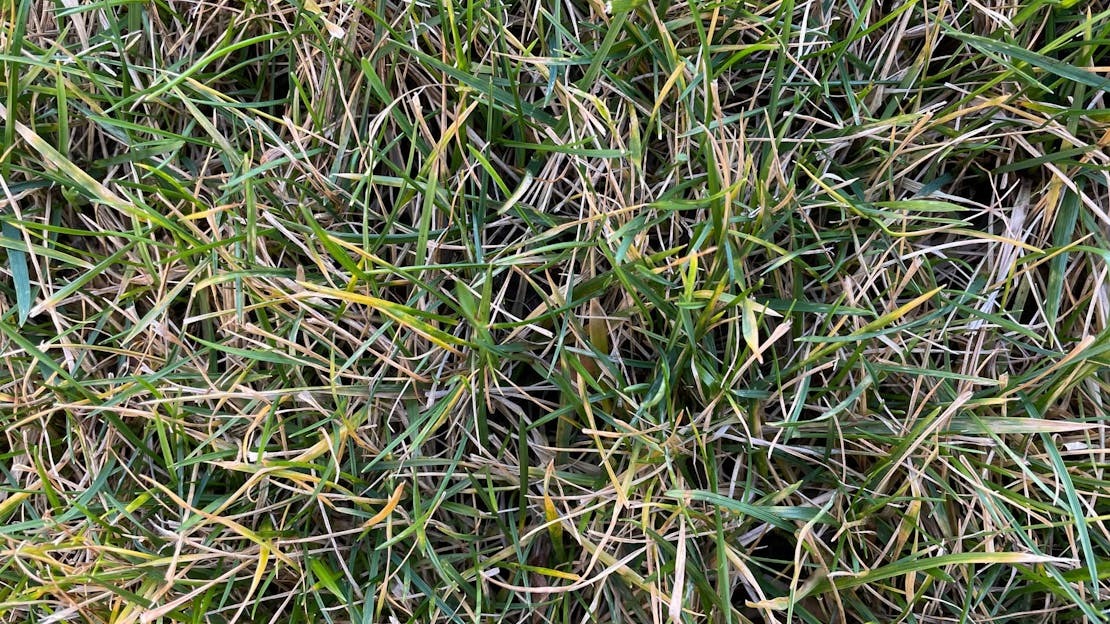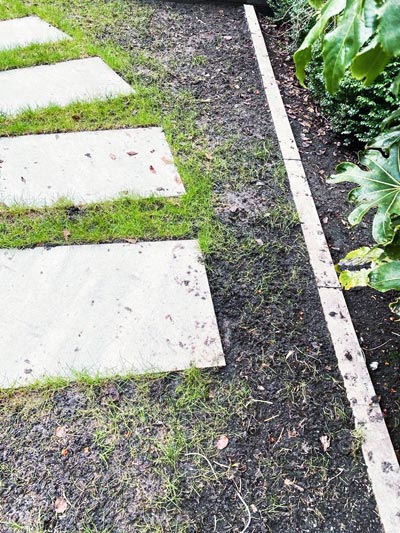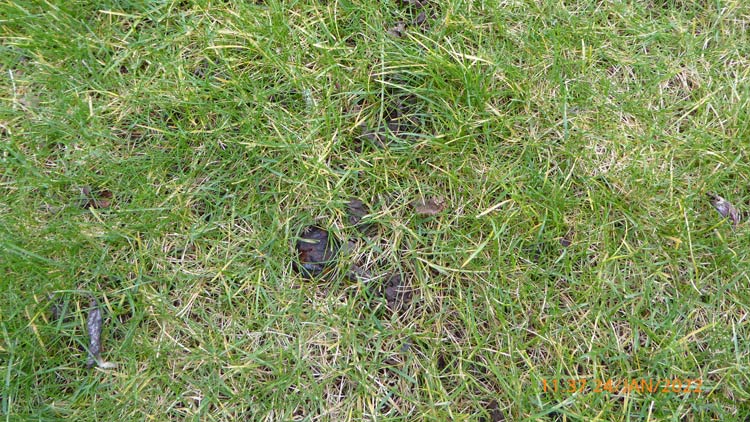
Winter Die-back & Lawn Problems
Prevention is better than cure but if your winter lawn care falls short then here are the ways to improve a poorly winter lawn
So, you’ve followed our Winter Lawn care Tips and done everything you can to prepare and manage your lawn for winter. But even the best laid plans will hit a few bumps in the road so you need to manage the following lawn problems as best you can.
Dead and Yellowing Grass in Winter
To a degree this is perfectly normal. Just as leaves on trees turn brown and fall ready to be replaced in spring then so do the leaves on grass plants. The top image shows this quite clearly and is perhaps an extreme example which may be due to:
- Heavy clay soils staying wet through winter thereby suffocating the roots
- Excessive rainfall or run-off causing water logging
- Low light levels
- Low nutrient levels due to lack of fertilizer or leeching caused by lots of rain
You can easily reduce the problem to a degree and considerably improve the colour and looks of the lawn by following our Winter Lawn Care Tips page.
Grass Thinning

This is something you are unlikely to have much control over. Shade from buildings and fences are the worst causes of extreme thinning and loss of grass in the adjacent area as in this image. The problem becomes even more serious during winters with heavy rain-fall. Changing grass type to a shade grass will help to a degree but deep shade in winter close to fences and building will still cause some grass loss.
The lawn opposite probably has an underlying drainage problem as this has occurred during a relatively normal winter with no excessive rainfall or flooding. Unfortunately no end of lawn care will resolve this problem until the underlying cause is remedied.
How to Recover Grass on a Winter Damaged Lawn
You can over seed in spring with your preferred grass blend keeping in mind that:
Shadygreen will do best over winter but may need watering in summer
Lawnsmith Shadygreen Grass Seed
Staygreen will tolerate the dry and wet the best but not quite so good as Shadygreen in the shade
Lawnsmith Staygreen Grass seed
Classic may thin the most but will blend best with existing lawns
NOTE: If you need to use two different seeds in the same area merge them into each other so that there is no hard edge. For example: Shadygreen seed by might be a one metre strip by the fence and the rest of the lawn could be Classic grass seed. So where they meet use a 50/50 mix about 1 metre wide.
Follow in depth advice Spring Lawn Repair
Keep Leaves off the Lawn
Leaves left on the lawn any more than 7-10 days will cause damage.
Read the full article Leaves on the Lawn
How to Control Worms and Worm Casts in the Lawn
Worms surface at the top of the soil when the lawn surface is moist and soft usually from September to May.
To have some control read Worms & Worm Casts
Snow can mean Disease in the Winter Lawn
Snow lying on the lawn is not too much of a problem and has to be lived with. However, snow heaped on to the lawn from the driveway or from snowmen packs down and creates an unhealthy environment underneath that can bring on disease.
See Snow Mould
Boggy Wet Lawn Problems and Drainage
Some lawns, particularly those on clay soils can have such poor drainage that winter rainwater will not percolate through. You are then left with sticky wet soil and a drowning lawn that will thin rapidly if this condition persists for more than a few weeks. The only answer is drainage with lawn tiles which is a specialist area and shouldn’t be tackled without specialist help.
If only small areas of lawn have a problem install a soak-away at the edge of the lawn not in it. In addition, run-off from buildings and patios etc should be diverted to go into a drain or soak-away not into the lawn.
Moss Grows in the Lawn over Winter
Moss will take a hold and capitalise on a poorly maintained or under nourished lawn. So, if you action our Winter Lawn Care plans you should have only minimal problems with moss going into spring. Ferrous sulphate that you used will not only green your lawn but also deter worms and kill moss.
If moss is a problem, then read Lawn Moss Control & Removal
The Lawn below has obvious Winter Problems
A small percentage of dead grass is normal as is a small amount of yellowing as the grass draws nutrients from the leaves which then turn brown. If the yellowing, dead grass and some thinning becomes alarming then the grass is short of some of the fundamental elements that support life. In winter this would be low light levels and loss of nutrients usually from excessive rainfall. Though you may not be able to improve the light you can keep the nutrient levels optimal with a very low dose nitrogen and high does potassium feed. Hardening with ferrous sulphate either as a standalone treatment or with the fertiliser would be a wise addition. See our product selection at the bottom of the page.
In addition, during winter, worms will be casting quite heavily and moss will start making inroads into you sickly grass so a dose of ferrous sulphate will reduce these as well.

Do you have a Different Problem with your Winter Lawn?
Then please take some still images. They need to be in perfect focus and show 3 distances:
- Very close up showing plant leaves
- Medium distance showing the localised problem
- General picture of the lawn so we get a feel for the setting
Send to [email protected]